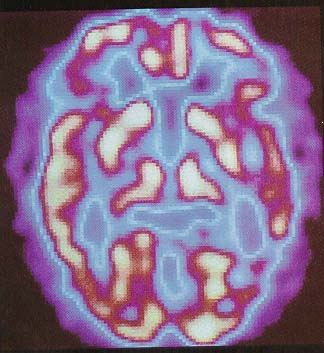What is Nuclear Medicine?
Nuclear Medicine is the use of radioisotopes for diagnosis, treatment, and research. Radioactive chemical tracers emit gamma rays which provides diagnostic information about a person's anatomy and the functioning of specific organs. Radioisotopes are also utilizes in treatments of diseases such as cancer. It is estimated that approximately one in two people in Western countries are likely to experience the benefits of nuclear medicine in their lifetime.
What is a radioactive isotope?
courtesy of http://www.ag.ohio-state.edu/~rer/rerhtml/rer_20.html
To understand what a radioactive isotope is a basic unserstanding of the atom is necessary. Atoms are comprised of three subatomic particles : protons, neutrons and electrons. Protons and neutrons bind together to form the nucleus of the atom, while the electrons surround and orbit the nucleus. Protons and electrons have opposite charges and therefore attract one another (electrons are negative and protons are positive, and opposite charges attract), and in most cases the number of electrons and protons are the same for an atom (making the atom neutral in charge). The neutrons are neutral. Their purpose in the nucleus is to bind protons together. Because the protons all have the same charge and would naturally repel one another, the neutrons act as "glue" to hold the protons tightly together in the nucleus.
While all atoms of the same element have the same number of protons, it is possible for atoms of one element to have different numbers of neutrons. Atoms of the same element with different numbers of neutrons are called isotopes . For example, all atoms of the element carbon have 6 protons, but while most carbon atoms have 6 neutrons, some have 7 or 8. Isotopes are named by giving the name of the element followed by the sum of the neutrons and protons in the isotope's nucleus. So a carbon atom with 6 protons and 6 neutrons in its nucleus is called Carbon-12. The carbon atom with 8 neutrons is called Carbon-14. It is interesting to note that Carbon-14 is radioactive while Carbon-12 and Carbon-13 are stable.
Diagnostic Nuclear Medicine
courtesy of http://www.petscaninfo.com/zportal/portals/pat/cancer
In nuclear medicine diagnosing techniques, a very small amount of radioactive material is introduced into the body. Because medical isotopes are attracted to specific organs, bones or tissues, the emissions they produce can provide crucial information about a particular type of cancer or disease. Information gathered during a nuclear medicine technique is more comprehensive than other imaging procedures because it describes organ function, not just structure. The result is that many diseases and cancers can be diagnosed much earlier.
Nuclear medicine procedures utilize very small doses of short-lived isotopes (ones that only stay radioactive for a few hours or days), the amount of radiation received is generally less than or equal to that of an x-ray. Whole body and healthy tissue doses can be minimized while the radioisotope is targeted toward the affected tissue or organ. The isotope is then eliminated by the body through the urine or fecal matter.
Treatments with Nuclear Medicine

thyroid cancer: courtesy of http://www.endocrineweb.com/thyroidca.html
During the last decade, major progress has been made in the treatment of disease with radioisotopes. Treatments involving the use of medical isotopes are gaining momentum in the race against many types of cancer. FDA approved and highly promising therapies are doubling every 3 to 4 years. Some researchers predict that over 80% of cancer types should be treatable with radioisotopes.
Currently the most common therapeutic uses of medical isotopes are for treatment of thyroid and prostate cancer , hyperthyroidism , cancer bone pain , and polycythaemia (abnormal red cell and blood increase). The major use in Europe is for treatment of arthritis (The U.S. FDA has not yet approved radioisotope treatments for arthritis).
Some of the most exciting cancer treatments utilizing medical isotopes are emerging from current research being conducted on cutting-edge medical applications. As research physicians test these promising radioisotope-based treatments at research hospitals and universities they gradually make their way up the ladder of clinical trials required for FDA approval.

